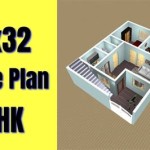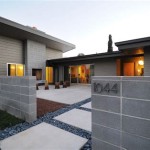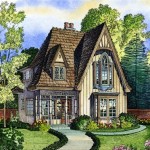Purple Martin House Plans are detailed instructions for constructing a specialized structure designed to attract and provide nesting sites for Purple Martins, a species of migratory swallow. These plans typically include precise measurements, material specifications, and step-by-step assembly guides to ensure proper construction.
Purple Martin colonies are renowned for their aerial acrobatics and insect-eating habits, making them beneficial birds to have around residential areas. Purple Martin Houses provide a safe and suitable nesting environment for these birds, promoting their population growth and assisting in the control of insect pests.
In the following sections, we will delve into the key elements of Purple Martin House Plans, exploring the materials, design considerations, and construction techniques involved in creating successful nesting structures for these fascinating avian visitors.
When considering Purple Martin House Plans, several key points deserve attention:
- Size and Dimensions: Determine the appropriate house size based on the number of nesting compartments required.
- Compartment Design: Ensure compartments provide adequate space and ventilation while protecting nestlings from predators.
- Entrance Holes: Designate specific entrance holes for each compartment to minimize territorial disputes among nesting pairs.
- Roof and Ventilation: Incorporate a sloped roof and ventilation system to regulate temperature and prevent moisture buildup.
- Mounting Options: Choose a mounting system that provides stability and allows for easy access for maintenance.
- Predator Guards: Install predator guards around the entrance holes to deter potential threats to nesting birds.
- Materials and Durability: Select durable materials that can withstand weather conditions and provide longevity.
- Assembly Instructions: Follow detailed assembly instructions to ensure proper construction and functionality.
- Maintenance and Cleaning: Establish a regular maintenance schedule to clean and inspect the house for optimal bird health.
By considering these essential elements, you can create effective Purple Martin House Plans that will attract and support a thriving colony of these beneficial birds.
Size and Dimensions: Determine the appropriate house size based on the number of nesting compartments required.
The size of your Purple Martin House will depend on the number of nesting compartments you want to provide. Each compartment should be approximately 6 inches wide, 6 inches deep, and 6 inches high. You should also allow for an additional 2 inches of space above the nest for ventilation.
- For a colony of 6-12 pairs: Choose a house with 12-18 compartments.
- For a colony of 12-24 pairs: Choose a house with 24-36 compartments.
- For a colony of 24-48 pairs: Choose a house with 48-72 compartments.
- For a colony of more than 48 pairs: You may need to use multiple houses.
It’s important to choose a house that is the right size for your colony. If the house is too small, there will be competition for nesting sites and some birds may not be able to find a place to nest. If the house is too large, it may be more difficult to attract and maintain a colony.
Compartment Design: Ensure compartments provide adequate space and ventilation while protecting nestlings from predators.
The design of the compartments in your Purple Martin House is critical to the success of your colony. The compartments should provide adequate space for the birds to nest and raise their young, while also protecting them from predators and the elements.
Size and Ventilation
Each compartment should be approximately 6 inches wide, 6 inches deep, and 6 inches high. This will provide enough space for the birds to move around comfortably and for the nestlings to grow and develop. The compartments should also have a ventilation hole near the top to allow for air circulation and to prevent the buildup of moisture.
Entrance Holes
The entrance holes to the compartments should be 2 inches in diameter and should be placed near the top of the compartment. This will help to prevent predators from reaching the nestlings and will also help to keep the compartments dark, which is important for the birds’ sleep cycle.
Predator Guards
To further protect the nestlings from predators, you can install predator guards around the entrance holes. These guards can be made of metal or plastic and should be large enough to prevent predators from reaching the nestlings, but small enough to allow the birds to enter and exit the compartments easily.
Nest Material
The birds will line the compartments with nesting material, such as straw, hay, or wood shavings. You can provide the birds with nesting material by placing a small amount in each compartment before you put the house up.
Entrance Holes: Designate specific entrance holes for each compartment to minimize territorial disputes among nesting pairs.
Purple Martins are territorial birds, and they will often compete for nesting sites. To minimize territorial disputes, it is important to designate specific entrance holes for each compartment in your Purple Martin House.
- Assign each compartment an entrance hole: Each compartment in your Purple Martin House should have its own dedicated entrance hole. This will help to prevent the birds from fighting over nesting sites and will also help to keep the compartments clean and sanitary.
- Make the entrance holes different sizes: The entrance holes to the compartments should be different sizes. This will help to prevent the birds from fighting over nesting sites and will also help to keep the compartments dark, which is important for the birds’ sleep cycle.
- Place the entrance holes at different heights: The entrance holes to the compartments should be placed at different heights. This will help to prevent the birds from fighting over nesting sites and will also help to keep the compartments dark, which is important for the birds’ sleep cycle.
- Orient the entrance holes in different directions: The entrance holes to the compartments should be oriented in different directions. This will help to prevent the birds from fighting over nesting sites and will also help to keep the compartments dark, which is important for the birds’ sleep cycle.
By following these tips, you can help to minimize territorial disputes among nesting pairs and create a more harmonious and productive colony.
Roof and Ventilation: Incorporate a sloped roof and ventilation system to regulate temperature and prevent moisture buildup.
The roof of your Purple Martin House is an important part of the structure. It protects the birds from the elements and helps to regulate the temperature inside the house.
Sloped Roof
A sloped roof is important for several reasons. First, it helps to shed water and snow, which can damage the house and the nests inside. Second, a sloped roof helps to create a draft, which ventilates the house and helps to keep the temperature inside the house cool.
Ventilation System
A ventilation system is also important for regulating the temperature inside the Purple Martin House. A well-ventilated house will help to prevent the buildup of moisture, which can lead to mold and mildew. Mold and mildew can cause respiratory problems for the birds, and can also damage the house.
There are several ways to create a ventilation system in your Purple Martin House. One way is to install vents in the roof of the house. Another way is to create a gap between the roof and the walls of the house. This gap will allow air to circulate and help to keep the house cool.
Mounting Options: Choose a mounting system that provides stability and allows for easy access for maintenance.
The mounting system you choose for your Purple Martin House is important for several reasons. First, it must be strong enough to support the weight of the house and the birds that will be nesting inside. Second, it must be stable enough to withstand high winds and other weather conditions. Third, it must allow for easy access to the house for maintenance and cleaning.
- Pole Mounting: Pole mounting is the most common way to mount a Purple Martin House. Pole mounting involves attaching the house to a metal or wooden pole that is buried in the ground. Pole mounting is a good option because it provides a stable base for the house and allows for easy access to the house for maintenance and cleaning.
- Eave Mounting: Eave mounting involves attaching the house to the eaves of your home. Eave mounting is a good option if you do not have a large yard or if you want to place the house close to your home. However, eave mounting can be more difficult to install and may not be as stable as pole mounting.
- Gable Mounting: Gable mounting involves attaching the house to the gable end of your home. Gable mounting is a good option if you want to place the house high off the ground. However, gable mounting can be more difficult to install and may not be as stable as pole mounting.
- Tree Mounting: Tree mounting involves attaching the house to a tree branch. Tree mounting is a good option if you have a large tree in your yard. However, tree mounting can be more difficult to install and may not be as stable as pole mounting.
When choosing a mounting system for your Purple Martin House, it is important to consider the size and weight of the house, the height at which you want to place the house, and the stability of the mounting system. You should also consider the ease of access to the house for maintenance and cleaning.
Predator Guards: Install predator guards around the entrance holes to deter potential threats to nesting birds.
Predator guards are an important part of any Purple Martin House. They help to protect the birds from predators, such as snakes, cats, and raccoons. Predator guards can be made of metal or plastic, and they are typically attached to the house around the entrance holes.
There are several different types of predator guards available. Some predator guards are simple metal or plastic discs that are attached to the house around the entrance holes. Other predator guards are more elaborate, and they may include features such as spikes or baffles to deter predators.
When choosing a predator guard, it is important to consider the size of the entrance holes and the type of predators that are common in your area. You should also consider the ease of installation and maintenance of the predator guard.
Once you have chosen a predator guard, it is important to install it properly. The predator guard should be attached securely to the house, and it should not block the entrance holes.
Predator guards are an important part of any Purple Martin House. They help to protect the birds from predators, and they can help to ensure the success of your colony.
Materials and Durability: Select durable materials that can withstand weather conditions and provide longevity.
Exterior Materials
The exterior of your Purple Martin House should be made of a durable material that can withstand the elements. Some good options include:
- Wood: Wood is a classic material for Purple Martin Houses. It is durable, easy to work with, and relatively inexpensive. However, wood can rot and warp over time, so it is important to choose a wood that is resistant to rot and moisture, such as cedar or redwood.
- Plastic: Plastic is another good option for the exterior of your Purple Martin House. It is durable, weather-resistant, and easy to clean. However, plastic can fade and become brittle over time, so it is important to choose a high-quality plastic that is UV-resistant.
- Metal: Metal is the most durable material for the exterior of your Purple Martin House. It will not rot or warp, and it is resistant to pests and predators. However, metal can be more expensive than wood or plastic, and it can be more difficult to work with.
Interior Materials
The interior of your Purple Martin House should be made of a material that is safe for the birds and easy to clean. Some good options include:
- Wood: Wood is a good option for the interior of your Purple Martin House because it is natural and safe for the birds. However, wood can rot and warp over time, so it is important to choose a wood that is resistant to rot and moisture, such as cedar or redwood.
- Plastic: Plastic is another good option for the interior of your Purple Martin House because it is durable, easy to clean, and safe for the birds. However, plastic can fade and become brittle over time, so it is important to choose a high-quality plastic that is UV-resistant.
- Metal: Metal is the most durable material for the interior of your Purple Martin House. It will not rot or warp, and it is resistant to pests and predators. However, metal can be more expensive than wood or plastic, and it can be more difficult to work with.
Hardware
The hardware you use to construct your Purple Martin House should be made of a durable material that is resistant to rust and corrosion. Some good options include:
- Stainless steel: Stainless steel is the best option for hardware because it is strong, durable, and resistant to rust and corrosion.
- Galvanized steel: Galvanized steel is a good option for hardware because it is strong, durable, and resistant to rust. However, galvanized steel can be more expensive than stainless steel.
- Aluminum: Aluminum is a good option for hardware because it is lightweight, durable, and resistant to rust. However, aluminum can be more expensive than stainless steel or galvanized steel.
By choosing durable materials for your Purple Martin House, you can help to ensure that it will last for many years and provide a safe and comfortable home for your colony of Purple Martins.
Assembly Instructions: Follow detailed assembly instructions to ensure proper construction and functionality.
Once you have chosen a Purple Martin House Plan, it is important to follow the assembly instructions carefully. Proper assembly is essential to ensure that the house is safe and functional for the birds.
- Read the instructions carefully before you begin assembly. Make sure that you understand all of the steps before you start. If you have any questions, consult the manufacturer’s website or customer service department.
- Gather all of the materials and tools that you will need. This includes the Purple Martin House kit, a screwdriver, a drill, and a level.
- Assemble the house according to the instructions. Be sure to follow the steps in the correct order and to use the correct materials and tools.
- Once the house is assembled, inspect it carefully to make sure that it is sturdy and safe. Check the joints to make sure that they are secure and that there are no sharp edges or splinters.
By following the assembly instructions carefully, you can ensure that your Purple Martin House is properly constructed and functional. This will help to attract and support a thriving colony of Purple Martins.
Maintenance and Cleaning: Establish a regular maintenance schedule to clean and inspect the house for optimal bird health.
Once your Purple Martin House is assembled and installed, it is important to establish a regular maintenance schedule to keep it clean and in good repair. This will help to ensure that your Purple Martins have a safe and healthy place to nest and raise their young.
- Clean the house regularly. Purple Martin Houses should be cleaned at least once a year, and more often if they are heavily used. To clean the house, remove all of the nesting material and debris. Wash the house with a mild soap and water solution, and then rinse it thoroughly. Allow the house to dry completely before putting it back up.
- Inspect the house for damage. When you clean the house, also inspect it for any damage. Look for cracks, holes, or other damage that could allow predators to enter the house. Repair any damage immediately.
- Remove old nests. Old nests can harbor parasites and diseases, so it is important to remove them from the house each year. To remove old nests, simply reach into the house and pull them out. You may need to use a stick or a pair of pliers to remove nests that are stuck.
- Add fresh nesting material. Once you have cleaned the house and removed the old nests, add fresh nesting material. Purple Martins prefer to use soft, natural materials such as hay, straw, or wood shavings.
By following these simple maintenance tips, you can help to ensure that your Purple Martin House is a safe and healthy place for your colony to nest and raise their young.










Related Posts








